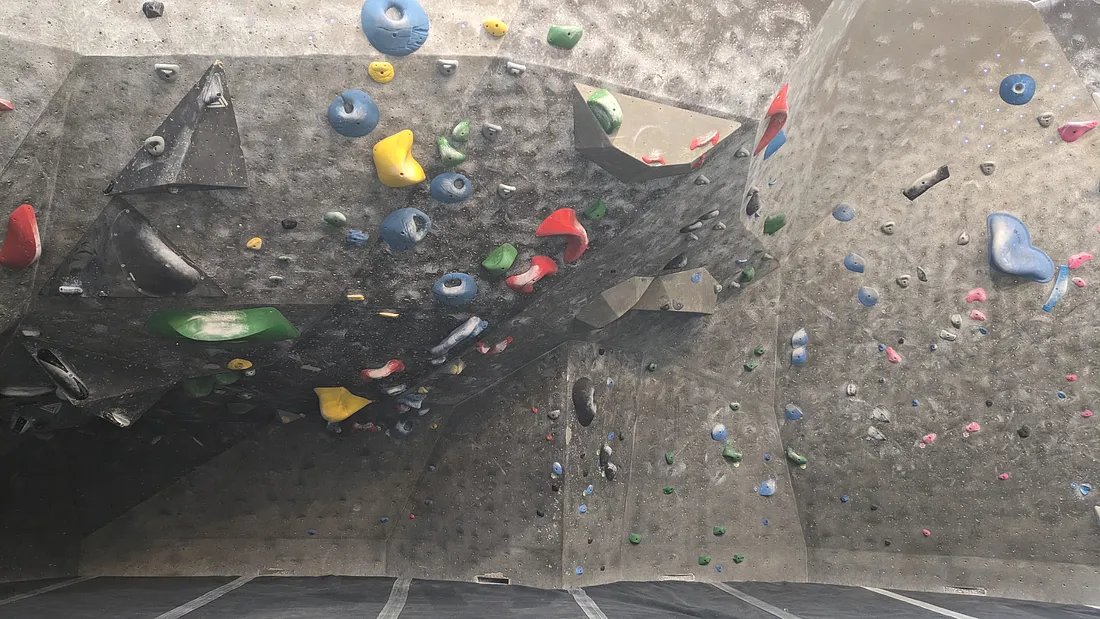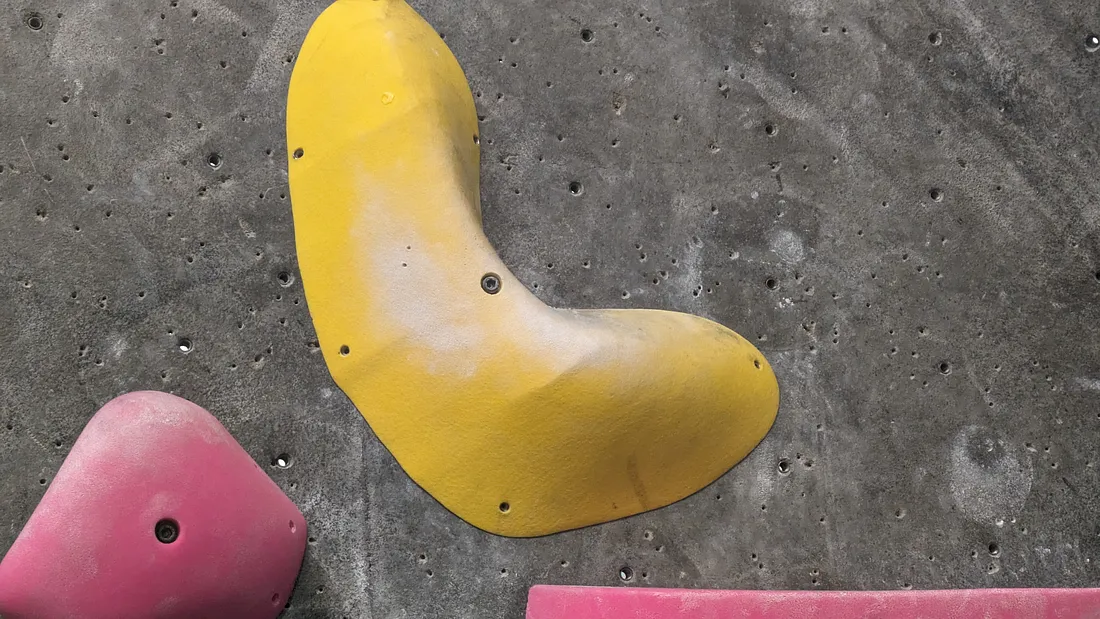Quick heads-up: some of the links on this page are affiliate links. If you make a purchase through them, we may earn a small commission (at no extra cost to you). This small bit of income helps keep our site running.
Types of Climbing Holds

When you're out there climbing, whether it's at the climbing gym or out at the crag, knowing the different rock climbing hold types is essential.
Dive Deep into the Holds
Jugs: These are every climber's friend. Jugs are those big, generous holds that you can wrap your hand around, kind of like the handle on a jug of milk. They're often used for resting because you can get a good grip without much effort.
Crimps: Crimps are small and require precise finger placement. They can be all sorts of shapes and sizes, but generally they don't have much of a lip to them, so you can't get your fingers in behind anything, and they're usually only a finger pad or two deep. Any bigger than that and it's just a small jug.
Pinches: These holds require you to literally pinch them between your fingers and thumb. They come in all shapes and sizes, and their difficulty largely depends on how much of the hold you can actually grasp. Pinches test your thumb strength and your ability to apply even pressure with your grip. They're a good reminder that climbing isn't just about fingers, your thumbs need love too.
Slopers: The nemesis for many climbers, slopers are those rounded, often featureless holds that seem impossible to grip. Success with slopers is less about grip strength and more about how you position your body and how effectively you can use friction to your advantage. They require a delicate balance of body tension and a subtle approach to hand placement. Slopers will teach you the importance of trusting your feet and the art of the subtle shift in body weight. You'll see a lot of slopers in bouldering, but not as many in sport climbing.
Pockets: These are holds with one or more holes big enough to slot your fingers in to. Pockets can be monos (one finger), or something bigger than you can get multiple fingers in to. Climbers will typically use the middle finger for a mono, and the middle finger and ring finger for a pocket that can only fit 2 fingers, though some people like the middle finger and pointer too. Be careful with pockets, if your fingers aren't used to the strain you can hurt yourself easily.
.jpg)
Climbing Outdoors
Jugs
Jugs are commonly found in limestone and volcanic rock formations. Limestone, with its sedimentary layers, often erodes into spacious cavities that form perfect hand-sized holds which is why limestone crags are often favorites with climbers.
Crimps
Crimps are very common on granite and gneiss sport routes and boulders. Granite, with its hard, compact structure, fractures to create sharp, precise edges ideal for crimping. Gneiss, characterized by its distinct banding, also provides a wealth of crimp opportunities through its layered composition.
Pinches
Pinches you'll find on many different kinds of rock, but sandstone and conglomerate rocks is where you'll see them the most. Sandstone, with its grainy composition, erodes in ways that create unique, pinchable features. Conglomerate, a mix of various-sized stones bonded together, offers irregular shapes that are perfect for practicing pinch grips.
Slopers
Slopers are most associated with sandstone and granite. The smooth, rounded surfaces of sandstone slopers require careful body positioning to maintain grip. Granite, on the other hand, is full of crystals can provide slightly textured slopers that challenge climbers to maximize surface contact and leverage friction.
Pockets
Pockets are predominantly found in limestone due to its solubility in water. Over time, water erodes the rock, carving out deep holes that range from single-finger monos to more spacious three-finger pockets. These features test the climber's finger strength and precision.
The Takeaway
Each type of climbing hold presents its own unique set of challenges and lessons. Jugs teach you about rest and recovery, crimps about precision and finger strength, pinches about the importance of thumb involvement, slopers about trust and body positioning, and pockets about strategic finger usage and the risks of overloading.

